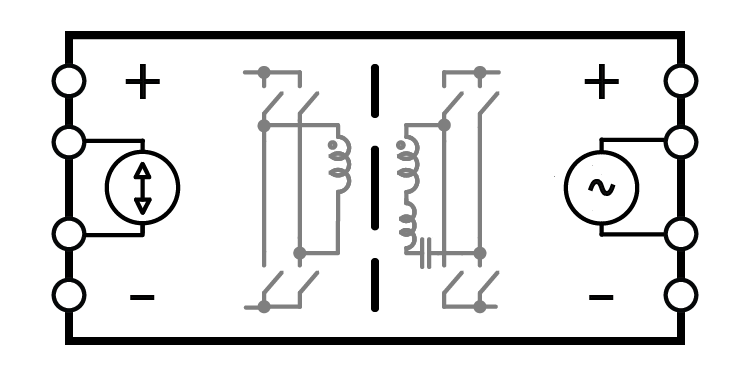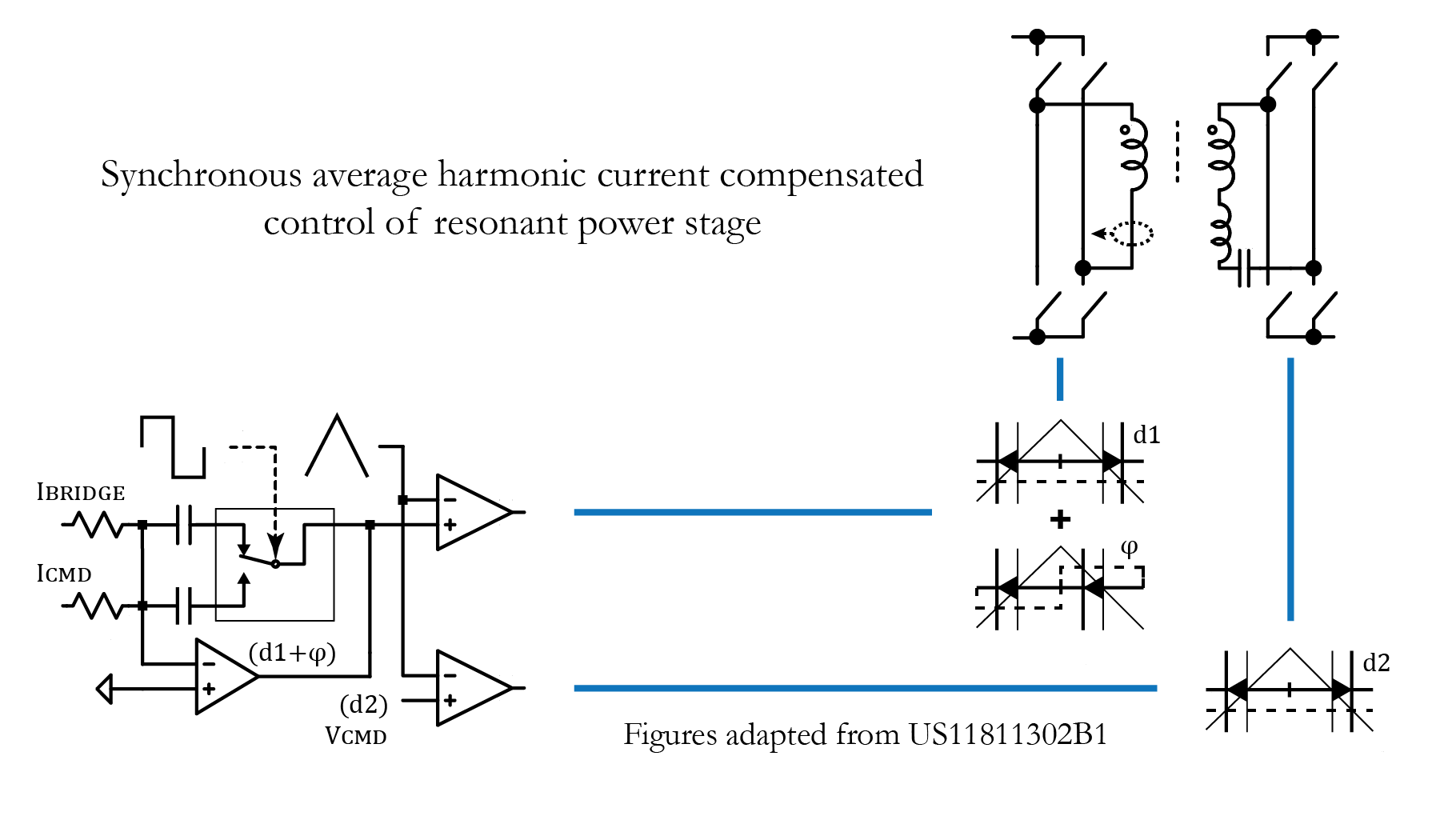Simple and Efficient Harmonic Control
The objective of a single stage power architecture is to efficiently meet overall power system design goals. Synchronous average harmonic current control linearizes a resonant power stage about an efficient operating point resulting in a simple gain relationship between isolated DC voltage busses.
The control technique is advantageous for full bridge and half bridge (including push pull) DC/DC power converters, and also supports design of (AC&DC)/(DC&AC) power systems in a single stage with minimal complexity.
Synchronous Average Harmonic Compensation
A synchronous average harmonic current compensator functions to average bridge current synchronously over each half of a switching period. The output of the compensator encodes a superposition of a duty cycle command and a phase command which respectively control low frequency current and minimize reactive switching current. This technology enables stable and efficient synchronous phase control of resonant power stages.
The superimposed phase command (φ) minimizes a difference in half period average current to efficiently couple power:
Reactive current is minimized, and productive current transfer couples isolated DC busses
Coupling results in low impedance buck-boost voltage regulation
The superimposed duty cycle command (d1) controls common half period average bridge current:
Low frequency bridge current tracks a regulated value
A voltage command (VCMD) controls voltage across an isolated bridge and provides a regulation input:
Voltage gain = n·sin(πd1)/sin(πd2)), where n is a turns ratio and d1 and d2 are duty cycles
The efficient architecture shown may be adapted to applications ranging from simple DC/DC power converters to generalized (AC&DC)/(DC&AC) power converters with independently controllable bidirectional power transfer to each port. See our Solutions page for a range of embodiments supporting broad application types.


